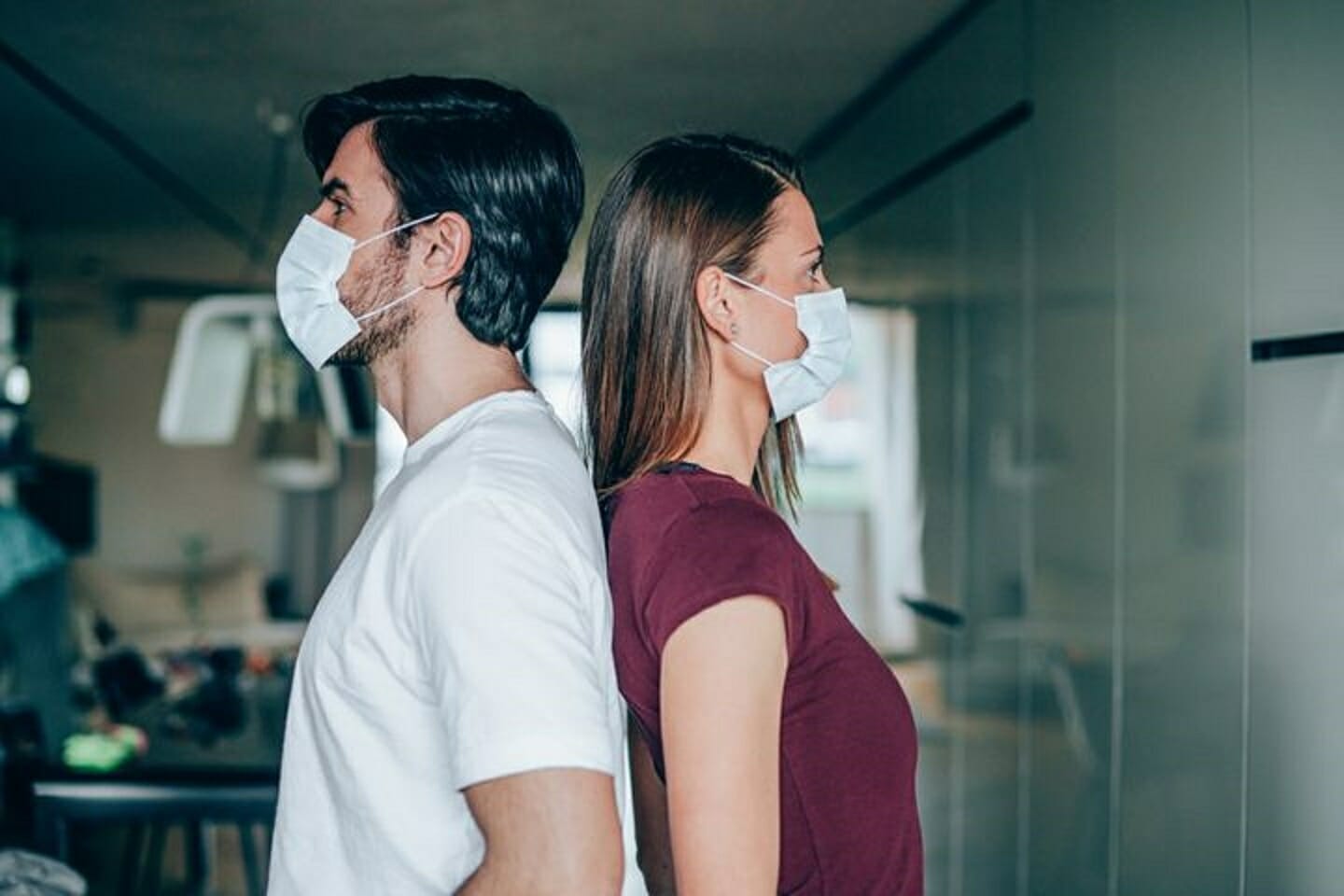COVID-19 Economic Impact
There is no returning to normal after COVID-19, but there is a path forward.
We interviewed various organizations, institutions and economic managers about the ramifications of coronavirus pandemic. The COVID-19 Economic Impact digest will give perspective to your engineering plans, construction projects, technological investment and industrial projects.
According to Harvard Business School
A survey of small-business owners shows that lack of liquidity and skepticism of government programs are compounding COVID crisis recovery efforts.
If the COVID-19 crisis lasts four months, 65 percent of small retailers say there’s a good chance they’ll be forced to close permanently by the end of the year. Among restaurants and bars, 70 percent expect to go out of business if social-distancing orders last into July.
Retail, entertainment, food services, hospitality, and personal services industries have been hit hardest as social distancing guidelines and stay-home orders restrict in-person operations, sinking demand to near zero. Professional services businesses have fared better, but they have not been spared—just 63 percent say they could weather a four-month public health lockdown.

The severity of the shock is also due in part to an overall lack of liquidity. On average, survey respondents with less than $10,000 in monthly bills had only enough cash on hand to cover one month of expenses.
“Firms today are very lean and cash-strapped,” says Christopher Stanton, the Marvin Bower Associate Professor at Harvard Business School. “They need to cut expenses to the bone to ride out this crisis.”
According to McKinsey & Company
The COVID-19 outbreak began in Asia—but so have early indications of containment, new protocols, and the resumption of economic activity. Although the risk of another outbreak remains, economic-activity indicators in China suggest that urban activities are returning to pre-outbreak levels. Traffic congestion and residential-property sales are close to where they stood in early January 2020. Air pollution and coal consumption have returned to 74 and 85 percent, respectively, of their January 1 levels. At this moment, strong public-health responses in China, Singapore, and South Korea appear to have been successful. Significant evidence indicates that the curve of cumulative confirmed COVID-19 patients in Asia is becoming flatter.
As companies in the region resume activity, they may be the world’s first to shape the “next normal.” What will that look like? Four dimensions could define it:
- Rethinking social contracts. In crises, the state plays an essential and expanded role, protecting people and organizing the response. This power shift transforms long-held expectations about the roles of individuals and institutions.
- Defining the future of work and consumption. The crisis has propelled new technology across all aspects of Asian life, from e-commerce to remote-working and -learning tools, including Alibaba’s DingTalk, WeChat Work, and Tencent Meeting. New working and shopping practices will probably become a permanent fixture of the next normal.
- Mobilizing resources at speed and scale. Within weeks, China added tens of thousands of doctors and hospital beds. Several governments invested in new tools to map transmission and rolled out huge economic-stimulus plans. Asia has a proven ability to mobilize resources in a crisis.
- Moving from globalization to regionalization. The pandemic has exposed the world’s risky dependence on vulnerable nodes in global supply chains. China, for example, accounts for about 50 to 70 percent of global demand for copper, iron ore, metallurgical coal, and nickel. We could see a massive restructuring as production and sourcing move closer to end users and companies localize or regionalize their supply chains.
According to IMF
Since the pandemic’s outbreak, prices of risk assets have fallen sharply. At the worst point of the recent selloff, risk assets suffered half or more of the declines they experienced in 2008 and 2009. For example, many equity markets—in economies large and small—have endured declines of 30 percent or more at the trough. Credit spreads have jumped, especially for lower-rated firms. Signs of stress have also emerged in major short-term funding markets, including the global market for U.S. dollars.

To preserve the stability of the global financial system and support the global economy, central banks across the globe have been the first line of defense. First, they have significantly eased monetary policy by cutting policy rates—in the case of advanced economies to historic lows. And half of the central banks in emerging markets and lower income countries have also cut policy rates. The effects of rate cuts will be reinforced through central banks’ guidance about the future path of monetary policy and expanded asset purchase programs.
Second, central banks have provided additional liquidity to the financial system, including through open market operations.
Third, a number of central banks have agreed to enhance the provision of U.S. dollar liquidity through swap line arrangements.
And finally, central banks have reactivated programs used during the global financial crisis as well as launched a range of new broad-based programs, including to purchase riskier assets such as corporate bonds. By effectively stepping in as “buyers of last resort” in these markets and helping contain upward pressures on the cost of credit, central banks are ensuring that households and firms continue to have access to credit at an affordable price.
According to World Economic Forum
There is no returning to normal after COVID-19. But there is a path forward.
What happens when a major disruption like the COVID-19 pandemic hits the global economy in a massively accelerated timeframe? Suddenly we are through the looking glass: the horizons are turned around, and a world envisioned only by futurists is playing out in real-time on data terminals, social network feeds, and television screens.

Almost overnight, horizon three has now become horizon one, as fashion houses scramble to convert production lines to make surgical masks, automotive companies to produce ventilators, and brewers and perfume house to make hand sanitizer. Now the final horizon represents the world that used to be the first one: the one where people can leave their houses to go to cafes and movie theatres, go shopping and purchase non-essential goods, and travel domestically and internationally more or less freely.
According to Asian Development Bank
Given the highly unpredictable nature of the outbreak, the range of scenarios explored in this brief suggests a global COVID-19 Economic Impact of $77 billion to $347 billion or 0.1% to 0.4% of global GDP, with a moderate case estimate of $156 billion or 0.2% of global GDP. Two-thirds of the impact falls on China, where the outbreak has been concentrated so far. The estimated COVID-19 Economic Impact on individual developing Asian economies—and on sectors within these economies—is also provided.
Estimated Global and Regional COVID-19 Economic Impact, under Different Scenarios

The main channel through which many ADB DMCs will be affected will be through a substantial drop in tourism demand. For an economy like Palau, where international tourism receipts are close to 50% of GDP and over a third of international tourists are from China, the decline in tourism receipts will be substantial, anywhere between 3% of GDP in the best-case scenario to 9% of GDP under the worse-case scenario. Other economies for which tourism is important such as Cambodia, Maldives, and Thailand are also likely to see a significant decline in tourism revenues. There is already anecdotal evidence that tourism arrivals in many developing Asian economies have dropped by 50%–90% in February 2020 relative to the previous year. Overall, the authors’ estimates suggest a loss of $15 billion–$35 billion in tourism receipts for the PRC and $19 billion–$45 billion in tourism receipts for the rest of developing Asia.
According to National Economic Development Authority
The hit to global growth is imminent, with a global recession possibly on the horizon.
Average global gross domestic product (GDP) forecasts are around 0.9 percent for 2020, with the latest forecasts from S&P and Capital Economics at 1.0 percent and -1.0 percent, respectively. Bloomberg likewise presented four (4) scenarios for global growth — (1) China shock in which global GDP growth is at 2.9 percent; (2) more outbreaks with 2.3 percent global GDP growth; (3) widespread contagion with 1.2 percent global GDP growth; and (4) global pandemic with 0.1 percent global GDP growth. Scenario 2 also assumes that there will only be “mild” recessions in Japan and Euro Area. Similarly, in a March 2 report, the Organisation for Economic Co-operation and Development (OECD) suggested a worst-case scenario of 1.5 percent global GDP growth for 2020. Global growth is seen to be primarily dragged down by direct effects from reduced demand and heightened uncertainty. They likewise estimated world trade to be significantly weaker, with a decline of 3.75 percent.
These are the sectors affected by the pandemic:
- COVID-19 Economic Impact on travel and tourism
- COVID-19 Economic Impact on exports
- COVID-19 Economic Impact on remittances
- COVID-19 Economic Impact on consumption
Watch Live Stream & Real Time Statistics of COVID-19
Other COVID-19 Updates
COVID-19: SOCIAL IMPACT
GineersNow Distributes PPE to Medical Workers
Israeli Cured COVID-19 Patients Using Placenta
COVID-19: HARVARD BUSINESS SCHOOL
Harvard Talks: Engineering Sector’s Organizational Development
Harvard Talks: Engineering Leaders Will Engage in Teaming
Harvard Covid-19 Strategy on How to Reopen a Country
Harvard Talks: Forward-Thinking Engineering Leaders
Harvard Talks: Engineering Operation Impact of COVID-19
Harvard Talks: 7 Leadership Principles in the Time of COVID-19
Harvard Talks: Engineering Work Culture After COVID-19 Pandemic
Harvard Talks: 7 Leadership Principles in the Time of COVID-19
Harvard Talks: Cut Salaries or Cut People?
Harvard Talks: The Supply Chain in Post COVID-19 Era
COVID-19: WORLD HEALTH ORGANIZATION
WHO Preparedness and Response to COVID-19
WHO Q&A: COVID-19 and Influenza Comparison
COVID-19: CONSTRUCTION
Construction Force Majeure During COVID-19
Converting Existing Building to COVID-19 Hospital – WHO Guidelines
WHO COVID-19 Buildings & Tents Screening Layout Standards
COVID-19: HVAC
COVID-19 Hotel is a Huge HVAC Nightmare
Ventilation Standards for Buildings Converted to COVID-19 Hospitals
Air Filtration for COVID-19 Treatment Centers
ASHRAE on COVID-19 HVAC Concerns
COVID-19: ENERGY
Oil Price Crashes Below $0 per Barrel
Coronavirus will accelerate the growth of renewable energy solutions
COVID-19: ECONOMIC IMPACT
COVID-19 Economic Impact Analysis
COVID-19 Economic Aftermath on the Construction Industry
Postponed Exhibitions in the Philippines due to COVID-19
Cancelled Major Events Around the World Due to COVID-19
World Bank Gives $12 Billion to COVID-19 Affected Countries
COVID-19: VENTILATORS & PPE
UCLA Biodesign Fellow Focuses Biomedical Engineering Insights on Swabs Shortage
Philips Ventilator Respironics E30 for ICU COVID-19 Patients
Here’s the Tesla Ventilator Prototype
Lamborghini Medical Shields & Surgical Masks for Health Workers
UCLA Engineer Made a Ventilator from Hardware Items
Forecast Deaths, Hospitals & Ventilators: COVID-19 Impact, USA Full Report
Top 10 Largest Ventilator Manufacturers in the World
Metronic Ventilator Ramping Up Production
Engineers, Can You Help Build a DIY Ventilator for Hospitals?
PPE Shortage Endangering Health Workers Worldwide
COVID-19: STATISTICS & FORECASTS
COVID-19 Deaths to Reach 81,000 in US By June – Forecasts by IHME & Univ. of Washington
List of Government Officials Tested Positive in PH
COVID-19 War: 70K Physicians vs 109M Filipinos
Famous People Who Have Tested Positive for COVID-19
These Politicians Tested Positive for Coronavirus (COVID-19)
COVID-19 Philippines: DOH on Code Red Status
COVID-19: SCIENCE
100% Success Rate for Pluristem COVID-19 Treatment
What If There’s No Vaccine To Fight COVID-19?
COVID-19 Treatment: The Search Continues
Clean Air in Europe leads to 11K Fewer Deaths During Lockdown
Complete List of Companies Working on Coronavirus Vaccine
Tiger Tests Positive for Coronavirus at New York Zoo
COVID-19: PREVENTION TIPS
We Need Testing, Vaccine & Treatment, But Until That Happens, We Need This!
How to Create a COVID-19 Proof Workplace
Work From Home Tips for Engineering, Industrial & Tech Companies
Water is Our First Line of Defense Against COVID-19
The List of COVID-19 Disinfectants Approved by EPA
COVID-19: TECHNOLOGY
Robot Technology to Reinstate a COVID-Free Airport
How Artificial Intelligence Can Drive Greater Speed and Accuracy in Vaccine Development
Cyber-Criminals are Exploiting People’s Fears of COVID-19
COVID-19: MARKETING
How to Apply for Government Financial Assistance for SMEs
Harvard Talks: How Marketing Works During COVID-19
Rewriting Marketing in Times of COVID-19 Crisis?
Hyundai Motor Extends Warranties Due to COVID-19
Top 5 Most Traded Stocks During COVID-19
COVID-19: EDUCATION
Coaching Builds COVID-19 Resilience to Engineering Team
How COVID-19 Is Changing College Admissions Cycle in 2020
COVID-19: AVIATION
Can We Give Airline Financial Relief to Protect Their Jobs?
Airlines Around the World are Struggling to Survive
COVID-19: APAC Air Passenger Demand Dropped 65.5%
Emirates Airline Passenger Rules During COVID-19
Airlines Around the World are Struggling to Survive
Show Your COVID-19 Test Result at the Airport
The Most Modern Flying Hospital with ICU from Germany
COVID-19 Impact: 25 Million Jobs at Risk with Airline Shutdown
Airbus Gives 3D-Printed Hospital Visors to Health Workers
Airlines COVID-19 Analysis: Aviation Collapsed
Air Cargo Demand Down 3.3% due to COVID-19 Disruption
COVID-19 Financial Impacts in the Aviation Industry
COVID-19 Hits January Airline Passenger Demand, IATA








































